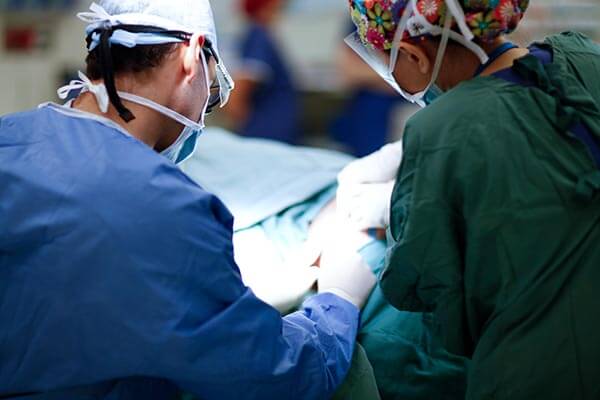Breast Lift Melbourne - Mastopexy
Breast Lift Melbourne
Reshape your silhouette with a mastopexy
Breast lift surgery involves raising, tightening, and reshaping the breasts to regain a more youthful, firmer, and symmetrical appearance, and to improve self-confidence. This can also include reducing the areola size, elevating the nipple, and removing excess skin.
Having a breast lift can help to reverse the changes caused by weight gain or loss, pregnancy, breast feeding, skin irritations and infections, ageing, or genetic influences.
This surgery is not intended to change the size of the breasts. To achieve this, breast implants can be inserted through breast augmentation surgery in combination with, or instead of, a breast lift.


Common reasons why women consider having breast lift surgery
- After children or having lost a significant amount of weight the breasts may be particularly droopy or “empty”.
- To correct changes that have occurred due to the ageing process.
- Skin irritations such as rashes/fungal infections beneath the breasts.
- A desire to achieve a more pleasing shape with a balance between breasts and body.
What is involved with breast lift surgery?
- General anaesthetic.
- Surgery Duration: usually about 2-3 hours.
- Complex pre-operative markings are made by A/Prof White which are created to best achieve the desired surgical outcome.
- Breast tissue including skin, some glandular tissue and fat is excised or repositioned.
- The breast is re-modelled and sutured together including repositioning of the nipple.
- A breast implant may be inserted if necessary.
- The final scar pattern varies depending on individual anatomy and desired results but usually involves a scar around the areolar (coloured skin around the nipple) and a vertical scar.
- Dressings are applied.
- Drain tubes are not routinely used.
Recovery After Surgery
- Patients most commonly require a hospital stay of 1-2 nights.
- The area will feel a little uncomfortable for a few days.
- Gradually increase mobility and activity; generally back to most normal day to day activities at two weeks.
- Most women allow approximately two – three weeks off work. However, you may require additional time if your job is more physically demanding. This can be discussed with A/Prof White.
- Able to drive when feel comfortable to do so.
- No heavy lifting or exercise for 6 weeks e.g. Avoid gym, aerobics, running.
Post Operative Care and Review
Post-operative visits with A/Prof White
Approximately one week after surgery
– Aim: To ensure you are healthy and to review the surgical wounds.
Six weeks post-surgery
– At this time you will have a better idea of what the final result from surgery will be like. If all is progressing well, A/Prof White will give you the all-clear to resume normal activities.
12 months
– If there are any concerns you will be seen more frequently.
Surgery Techniques
There are different techniques
There are different techniques regarding the location of incisions that are used depending on your desired outcome, preferences, and suitability. Removal of excess skin, and breast reshaping and elevation is done via this access point. People undergoing breast lift surgery can be categorised into the following groups to identify which technique is to be used:
Group 1
This includes people who are seeking only a minimal amount of movement of the nipple or lift of the breasts. Surgery is a smaller procedure involving the peri-areolar and crescent lift technique.
Group 2
For people who have moderate sized breasts or want a moderate amount of lift, a vertical lift, also known as a lollipop incision, can be used. An incision is made around the areola, and another that moves down the breast to the crease underneath. This technique results in minimal scarring and is generally the preferred technique.
Group 3
The inverted T technique, also known as the anchor technique, is used for people who have larger breasts and require a larger procedure. This is not a common option. It involves a combination of the lollipop incision with another incision across the lower breast crease in the natural skin folds.
Which technique is right for me?
Your surgeon will discuss with you the options and clarify which lift technique you will require.
This choice also is reliant on whether you intend to combine a lift with other breast enhancement procedures.
Surgical Goals
- YOUR SAFETY.
- Address the individual issues you will have discussed with A/Prof White related to your decision to have this particular surgery.
- Achieve good projection (“perkiness”) of the breasts.
- Achieve good cleavage area.
- Minimise scars.
- Durable, long term pleasing shape.
No Surgery Is Risk Free
Risks To Consider
Anaesthetic
In otherwise well people, general anaesthesia is very safe with modern techniques. A/Prof White’s rooms will give you the details of your anaesthetist prior to surgery to discuss any specific concerns.
Bleeding/Haematoma
This may need a return to the operating theatre to evacuate a blood clot. This can impact on wound healing or skin survival.
Infection in the wound
If this does occur it can usually be cleared up with antibiotic tablets.
DVT/PE (Deep venous thrombosis/pulmonary embolus)
Blood clots that are potentially very serious and even life threatening, which can form in the legs and travel to the lungs. Multiple strategies are employed to minimise the risk of these occurring.
Wound healing issues
Stretch marks may not all be removed or new ones may be created. Gathers in the wound are often present at either end. These settle over several weeks to months in the majority of cases but sometimes may need a small revision. Initially there is almost always some contour issues or puckers. These settle down in most cases over several weeks.
Scars
Typically are at their thickest and reddest at 6-10 weeks after surgery. Scars continue to mature and improve for up to 18 months after surgery. Scar management advice will be discussed in your follow up visit with A/Prof White to assist in achieving the goal of a thin, barely noticeable scar.
Asymmetry
The scars may be slightly different on your right compared to left side.
Wound separation/delayed healing
This is much more common in smokers or if there is an infection.
Skin necrosis/loss
Very rare complication and almost only seen in smokers. If it does occur it needs significant aftercare, possibly more surgery and even skin grafting in the most extreme cases.
Seroma
Clear/straw like fluid that can collect following surgery. Usually it settles down with no intervention but if persistent or large may require drainage in the rooms (sometimes on several occasions) or even a drain tube to be inserted.
Numbness
Generally settles down over weeks to months.
Nerve injury
The main risks are to the facial nerve which controls facial movement. There may be some weakness post operatively but is not usually permanent although in rare cases this has been known to occur.
Frequently Asked Questions
How much is a breast lift?
The cost of breast lift surgery is different per patient and so for this reason, it’s best to organise a consultation with Associate Professor Dean White.
Can exercise lift the breasts?
How is breast lift surgery performed?
Can you have a breast lift without scars?
Should I get a breast lift before or after pregnancy?
Should you get a breast lift?
Before deciding to have breast lift surgery you should consider the following
- Desire for any further children: – Breast lift surgery is best carried out once a woman has finished having children as any subsequent pregnancies will alter the improved shape of the breasts achieved with surgery.
- Stable, healthy weight.
- If you are a smoker: STOP Smoking.
- Generally fit and healthy.
- Be over 18 years old and have finished breast development.
- Breast screening up to date: In women over 50 and/or where regular breast screening and mammograms have been recommended.
Alternatives to surgery
- No surgery or delaying surgery.
- Using a professionally fitted and comfortable bra to enhance or improve your natural shape and appearance of your breasts.
- Liposuction – Rarely good for reduction and will make sagging worse as it doesn’t adequately address the ‘loose’ skin.
Contact Associate Professor Dean White for breast lift surgery in Melbourne
Are you located in Melbourne and looking for breast lift surgery? A/Prof Dean White is a specialist plastic surgeon Melbourne offers breast lift surgery. Click here to get in touch with him.
Breast Surgery Resources

What is the importance of compression after plastic surgery?
Compression aids the recovery process following plastic surgery. If you are considering plastic surgery, you will know that there are many factors to consider. How

Breast Reductions for Athletes
Reducing the size of your breasts Key Takeaways: Breast size is a personal preference; larger is not always considered better Many athletes and active

